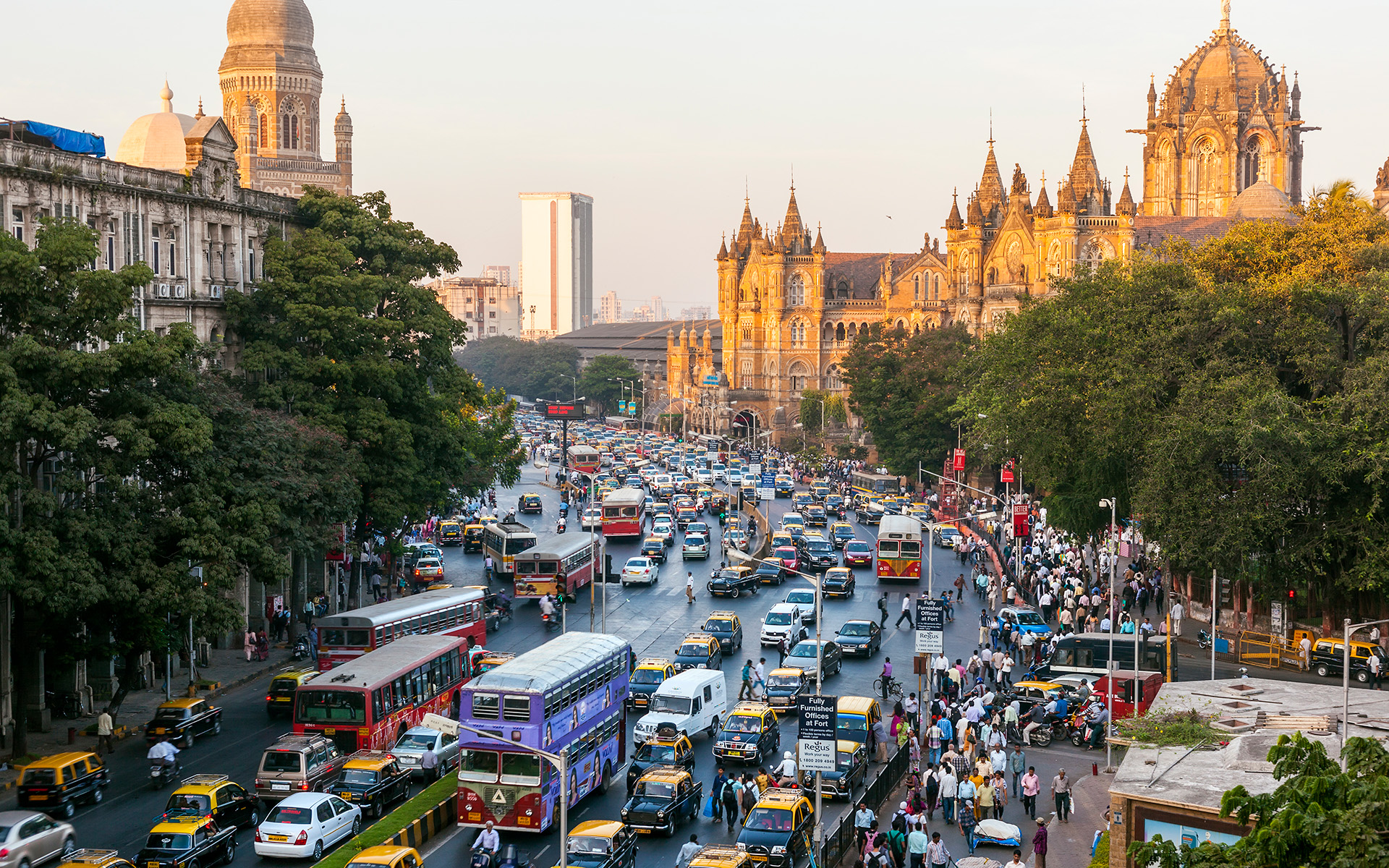Mumbai deservedly ranks high as a commercial hub, but faces competition from domestic peers and should expand its international connectivity.
City Class Score
| Commercial Hubs | |
| Export Champions | |
| Mobility Connectors | |
| Climate Resilient |
Corporate HQs, MNC presence, branded outlets, hotels, manufacturing, start-up ecosystem,
transport linkages, population, and income.
Go to the class information
Manufacturing, industrial parks, export share and share change by category, air and port
infrastructure, freight time to market, trade agreements, and expert interviews.
Go to the class information
Passenger traffic, flight connectivity, air-cargo flights, port infrastructure, container
ship sailings, and major road networks.
Go to the class information
Coastal and river flooding, extreme rain, extreme heat and humidity, cyclones, and water
scarcity.
Go to the class information
Mumbai’s architecture is a vibrant tapestry that reflects the city’s rich
history and diverse culture. The grand flourishes of the Chhatrapati Shivaji Terminus, with its
captivating blend of 1880s Victorian Gothic and traditional Indian elements, stand as a testament to
the city’s storied past. Nearby, the intricate carvings of the Mumbadevi Temple, the source of the
city’s name, invite visitors to explore their detailed artistry. Surrounding these iconic
structures, the street life of Mumbai pulses with energy, from the markets of Crawford to the shores
of Chowpatty Beach. Soaring high above it all is Antilia, the opulent residence of billionaire
Mukesh Ambani, symbolizing Mumbai’s dual identity as a cultural treasure trove and a commercial
powerhouse.
Mumbai’s status as a commercial hub stands at the crossroads of several key
megatrends. The city, along with the rest of India, is benefiting from a shift in global supply
chains. Global companies are increasing investment in the country, whose economic growth rate has
surpassed China’s slowing rate, and Mumbai is capturing its share of those flows. However,
challenges remain, as Mumbai is also vulnerable to climate change impacts, including flooding and
rising heat risks.
When it comes to commercial hubs, Mumbai shares more similarities with
Shanghai
than with Jakarta. The city leads domestically across various commercial metrics, such as the number
of global branded retail outlets and hotels, and serves as headquarters for over 600 listed firms.
Yet, much like Shanghai,
Mumbai faces stiff competition from domestic rivals Delhi, Chennai, and Hyderabad in all these
categories. The city’s strength lies in its broad capabilities across multiple sectors, not just in
services but also in manufacturing and transport, highlighted by the expansive Jawaharlal Nehru Port
and the bustling Mumbai International Airport, along with a dynamic startup community.
In
comparison with its global peers, Mumbai is still on the rise. It may not yet boast the
international flight connectivity of Bangkok
or Istanbul,
nor the global branded retail presence of Dubai
or Riyadh.
However, with a population exceeding 24 million, it ranks among the largest cities in our list of
1,500, alongside Mexico City and Cairo. The pivotal question is whether it will focus on catering to
its large, growing domestic market or expand its international connectivity — or both. Targeting a
more vibrant tourism industry has been beneficial for its peers, and with the country welcoming only
9 million arrivals in 2023 there is ample room for growth.

